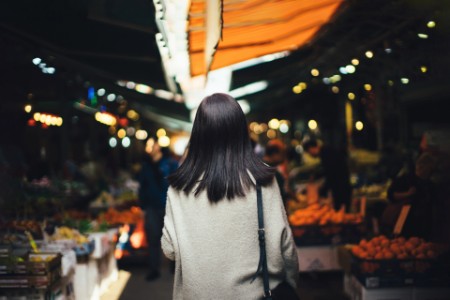
Chapter 1
Full, fast and equitable vaccination is a global public good
Vaccination programs are a huge logistical challenge for governments; will they all succeed?
The arrival of several viable vaccines against COVID-19 has brought much-needed hope to a dire situation. The challenge for governments will be to roll them out effectively at home while supporting global inoculation.
Can governments eliminate the COVID-19 threat or will they falter at the last mile?
The vaccines will have a huge positive effect not only on the global economy and trade but also on the quality of individual lives and the sustainability of the health system.
Effectively, they will allow countries to reopen their societies and economies, and establish a “new normal” – whatever that looks like. Yet rolling out vaccination programs on such a massive scale is unprecedented. The logistics of doing so fast and effectively will be the defining issue for governments in 2021.
The initial challenge will be to secure medical authorization, along with enough doses of the most suitable vaccine for the infrastructure available (for example, the Pfizer/BioNTech vaccine needs to be stored in ultra-cold freezers, while regular refrigeration is sufficient for the Moderna and AstraZeneca/University of Oxford vaccines).
The logistics of rolling out vaccination programs fast and effectively will be the defining issue for governments in 2021.
Other issues to tackle will include:
- Dealing with complex supply chains, including potential transport delays or barriers
- Understanding the makeup of the population to prioritize the most vulnerable
- Monitoring the comprehensive rollout of the vaccine, tracking doses and outcomes, and making sure there are enough centers and staff to deliver it
- Running a communications campaign to engage and reassure the public so people are willing to be vaccinated
- Clamping down on vaccine fraudsters charging people for fake vaccinations
On top of these challenges, governments will need to grapple with the effects of a still-growing pandemic and decreasing public patience with intermittent lockdowns. The pressure will be on to deliver for their populations, fast.
Will the vaccine be delivered equitably or will the most vulnerable countries be last?
In this context, it looks like 2021 will be a race between virus and vaccine. But while supplies remain relatively scarce, it will also be a race between governments to secure enough doses to protect their populations (“vaccine nationalism”).
It’s a dangerously myopic approach. The bigger picture is that vaccines will need administering in an equitable way if we’re to eradicate COVID-19 and repair the global economy. Yet according to the People’s Vaccine Alliance, rich countries – accounting for 14% of the world population – have bought 53% of the supply of promising vaccines.
This suggests that nearly 70 poor countries will only be able to vaccinate 10% of their population by the end of 2021. Dr. John Nkengasong, Director of the Africa Centers for Disease Control and Prevention, warns that vaccines likely won’t reach African countries until mid-2021. And the World Health Organization (WHO) estimates it might take until 2024 to vaccinate the whole world.
That would also force the countries that vaccinate last to use whatever stocks are left – whether or not they have the storage, transport or IT systems to roll them out effectively.
The danger of delaying
If these predictions prove to be right, new and more contagious mutations of COVID-19 will be able to spread across the globe, taking an even bigger toll on human health.
The delay would also put the brakes on economic recovery, costing high-income countries US$119b per year and the global economy more than US$1t per year. In comparison, the estimated US$25b needed to supply vaccines to low-income countries (according to the Bill & Melinda Gates Foundation) seems a small price to pay.
Fortunately, many countries have signed up to the WHO COVAX Facility, a global risk-sharing mechanism for pooling procurement and distributing COVID-19 vaccines in an equitable way.
Through its agreements, COVAX will have access to two billion doses of several vaccines by the end of 2021. As of December 2020, the 190 participating economies (98 higher-income countries and 92 low- and middle-income countries) were on track to have enough doses to protect vulnerable groups in the first half of 2021. And 1.3b donor-funded doses were to be made available to the 92 eligible low- and middle-income economies.
Only global distribution will bring herd immunity in the connected world
It’s clear that governments will need to roll out their programs in an equitable and efficient way to restore economic growth and trust in their ability to deliver.
While vaccines are still relatively scarce, this will involve finding the balance between vaccinating priority groups and limiting the effects of recurring lockdowns.
It will also mean recognizing that only a truly global distribution will lead to herd immunity in the connected world. If governments can learn from the vaccine nationalism of this crisis and treat equitable distribution as a global public good, they will be more likely to manage it fairly whenever the next pandemic arises.
Those that continue to put their own interests first, however, risk hamstringing recovery, widening existing cracks in the world order and lowering trust in government across the globe.

Chapter 2
The ultimate balancing act
Post-pandemic, can governments achieve the holy grail of sustained growth and lower debt?
Sustained growth will be the most effective way to deal with the long-term impacts of the crisis, from lagging productivity to growing inequality. But, just as each country will bear different economic scars, the ability to return rapidly to growth – and sustain it – will vary widely across the globe.
Will the vaccine fuel a rapid return to sustained growth or will long-term economic scarring dampen it?
Successful vaccination will certainly be key. But, as we discussed in the last chapter, the playing field for this is far from even. Stronger government finances in mature markets allow them to buy up doses and implement stimulus programs that are often beyond the means of emerging markets. A return to sustained growth is also more likely in countries that have managed to protect their citizens and companies from the fallout of COVID-19.
Inequity exists within countries, too. The worst-hit sectors, such as tourism, have seen high levels of unemployment, so are more dependent on the vaccine to return to normal. Some, such as retail, are unlikely to fully recover.
People who couldn’t work from home have also had a higher chance of contracting COVID-19 or becoming unemployed. In the US, those with a high school education or less have lost their jobs more often than those with college training, a Bachelor degree or higher. And while employment rates for high-wage workers have bounced back to almost pre-pandemic levels, they’ve yet to recover for low-wage workers.
Inequity exists within countries, too. The worst-hit sectors, such as tourism, have seen high levels of unemployment, so are more dependent on the vaccine to return to normal. Some, such as retail, are unlikely to fully recover.
These divisions risk contributing to a K-shaped recovery, which leaves certain individuals or groups behind and exacerbates existing divides in the economy and society. And according to the World Bank, unless governments implement reforms aimed at sustainable and equitable growth, “the global economy is heading for a decade of disappointing growth outcomes.”
Governments will need to consider comprehensive reforms that make societies and economies as a whole more resilient. Policy areas could include investing in education to develop future-fit skills, incentivizing citizens to spend again and helping the private sector to create jobs in the hardest-hit regions.
Supporting innovation in the sectors that are likely to grow and provide jobs in the long term will also be key (for example, the German Government’s €130b economic rescue package includes €50b for future-focused initiatives). These include rolling out e-charging points to promote electric cars and implementing a national hydrogen strategy.
Must we choose between austerity and a debt burden for the next generation?
Of course, all of this will cost money, which is in extremely short supply. The pandemic has pushed public debt to record levels, from the direct cost of caring for the sick to the huge economic support packages and plummeting revenues.
As a result, forecasts place the gross government debt in major advanced economies at 139% of GDP in 2021. That’s far higher than at the peak of the Global Financial Crisis (GFC) in 2009, when the figure stood at 99%.
Economists are divided over the best way to reduce the debt burden. Many subscribe to the view that debt isn’t intrinsically bad for mature economies, and austerity measures would most likely backfire. With global interest rates currently at near-zero levels, the annual cost of servicing the debt is manageable, for now. Yet others see debt as a barrier to dealing with the economic fallout of crises – current and future.
One thing is certain: public debt can’t grow faster than the economy indefinitely. Eventually, private borrowing will be crowded out and interest rates will rise.
Less a choice between two options – more a question of balance
To rein in their deficits, governments will need to strike a balance between investing in measures to encourage growth and reducing public spending.
This will be even more challenging than after the GFC, not least because the crisis has revealed the importance of funding public services properly. Proposed cuts to health or social care would likely resonate badly with the public.
Instead, governments should look to new technologies to combat fraud, improve tax compliance and manage public finances better. They should also reform the taxation system to reflect both the nature of work in the connected world and wider efforts to become more sustainable (for example, through carbon taxes).
Finally, much as with their policies for growth, they should try to rebalance their books in an equitable way that minimizes the impact on individuals’ welfare.

Chapter 3
A social contract fit for the 21st century
Governments should ensure the social contract serves everyone better, especially essential workers.
The social contract – the implicit and explicit agreements between citizens and governments, workers and employers – forms the foundation for how people live together in society. COVID-19 has caused us to question what that contract looks like and how it could, or should, change.
Can social contracts be transformed, or are we still wedded to our pre-pandemic mindset?
Over the last three decades, forces such as globalization and technology have lifted more than a billion people out of poverty. Yet in 2018, 3.4 billion people globally were living off just US$5.50 a day, while the world’s billionaires have more combined wealth than 60% of the global population.
The pandemic has reinforced these inequities by hitting more vulnerable groups the hardest – from ethnic minorities to older people and those with disabilities.
As we emerge from the crisis, we need bold ideas that can form the basis of a new social contract: one that values the contribution, sacrifice and commitment of frontline workers while supporting the ever-growing numbers of vulnerable people in society.
It’s also shone a spotlight on how reliant we all are on essential workers to feed, educate and protect us in times of adversity. But these same workers are often the most poorly paid and vulnerable, and at greatest risk of contracting COVID-19 in the workplace.
As we emerge from the crisis, we need bold ideas that can form the basis of a new social contract: one that values the contribution, sacrifice and commitment of essential workers while supporting the ever-growing numbers of vulnerable people in society.
A new social contract for the new normal
Such reform would take account of changes in work, technology and family structures that the crisis has propelled forward. It would also involve an overhaul of employment regulation, worker and social security protections, and the pensions system.
Physical safeguarding of workers would be a basic priority, along with new reward structures such as living wages, priority access to services and corporate discounts. Job quality and status should be center stage, along with stronger employment rights and policies to empower working people. Investments in technology could also automate more mundane work and allow a greater focus on human connections.
The reward? A happier, more motivated – and potentially more productive – workforce.
Taking the chance to think big
Reconfiguring the social contract would also enable governments to try out big, even radical, ideas.
Even before COVID-19, for example, many commentators were arguing for a universal basic income (UBI) that transfers money regularly to all citizens to make sure no one “falls through the cracks.” Schemes such as these are now getting fresh scrutiny. And in Spain, the Minister for Economic Affairs has already announced the country’s intention to make UBI a permanent “structural instrument” once the crisis is over.

Chapter 4
Governments need to act now for a greener, safer future
Will they act on the climate crisis and safeguard against future shocks – or focus on the now?
Of the political issues with long-term impacts, climate change has become dominant around the world. At the same time, environmental activism has moved into the mainstream, with Greta Thunberg and others inspiring millions to protest and take action.
This is with good reason. In the last five years, global carbon emissions reached record levels, and CO2 growth rates were nearly 20% higher than in the previous five years. In 2019, climate change amplified 15 extreme weather disasters that caused at least US$1b in damage each; 7 of those cost over US$10b each.
Meanwhile, back in 2015, 197 countries signed the Paris Agreement on reducing greenhouse gas emissions. But the targets they set won’t get us anywhere close to the aim: limiting the increase in global temperature to 1.5° Celsius above pre-industrial levels.
Will we act to address the climate emergency or return to our high-emission habits?
More encouragingly, several key players – including China and the EU – have committed to producing net-zero emissions by 2050 or 2060.
The COVID-19 crisis offers the perfect opportunity to capitalize on these efforts by galvanizing governments into taking collective action. After all, national lockdowns have given us a tantalizing glimpse of a what a lower-emission world could look like.
The enforced pause on industrial output and travel resulted in cleaner air and water, and the lowest level of CO2 emissions in 14 years. Before the pandemic, for example, New Delhi’s air was so polluted it could be seen from space; within days of its March 2020 lockdown, air pollution had dropped by almost 60%.
The level of change needed won’t be easy to achieve
A key challenge will be managing the inherent tension between public enthusiasm for tackling climate change and the need to reboot economies that are still heavily dependent on fossil fuels. That means making the regulatory and structural changes needed to move rapidly toward net-zero emissions.
There’s also a question mark over the behavior of individuals: will people shun public transport in favor of driving to work? Will they take their long-awaited foreign holidays by plane? And will their overall consumption go back up? All these could set countries back on their previous path.
The COP26 in November, delayed a year by the crisis, will be an opportunity to unite governments and businesses around these issues and to commit to urgent global action.
Will we learn from COVID-19 or fail to prepare for future crises?
Rather than being a “black swan,” as many reported, COVID-19 was entirely predictable. Between 2011 and 2018, the WHO traced almost 1,500 “epidemic events” in 172 countries.
Many reports have since cited lessons learned from these crises and highlighted the need to prepare for future ones. And in 2019, the Global Preparedness Monitoring Board followed many government, business and health leaders in warning that a pandemic was coming.
Despite this, national governments still viewed it as low risk and invested far less in measures to prepare than they spent on national defense. In 2015, the CIA estimated that military spending amounted to more than US$2t globally. But pandemics have killed many more people than war, and preparing for them costs a lot less.
Meeting the WHO’s minimum standards for pandemic preparedness would cost up to US$3.4b globally per year. That’s small change compared with Oxfam’s estimate that COVID-19 cost the global economy an extra US$11.7t in 2020. Not forgetting, of course, the huge human cost (two million lives lost so far) and the immense pressure exerted on health systems and workers around the world.
In 2015, the CIA estimated that military spending amounted to more than US$2t globally. But pandemics have killed many more people than war, and preparing for them costs a lot less.
Focusing on probability, not consequence, will leave countries exposed
So, will this watershed moment spur governments to prepare appropriately for the next global health crisis or shock? Or will our human tendency to focus on immediate challenges over seemingly distant risks prevail?
Governments that treat the COVID-19 outbreak as a rare event will be less likely to prepare for the next pandemic. What’s more, they might put any failures in the COVID-19 response down to its exceptional nature, rather than any lack of preparation.
But the reality is that the world will experience other shocks, including pandemics. So focusing on probability, rather than consequence, will leave countries vulnerable and exposed.
The sensible course is for governments to start creating the surplus capacity, and stockpiling the critical supplies, that they will need for a future crisis. More and better use of scenario planning, predictive analytics and resource simulations will also help make sure delivery systems and infrastructure are response-ready.
These exercises should involve everyone with an important role to play – from food producers, medical suppliers and logistics companies to health and social care providers, law enforcement and emergency service agencies.
Any barrier to this preparation – financial or logistical – should be swiftly overcome. Because if the crisis has taught us one thing, it’s that the cost of not being prepared vastly outstrips the cost of preparing.
Summary
This is a pivotal moment for governments. From lowering the debt burden to tackling climate change, they have a unique opportunity to decide how they will operate in a post-COVID-19 future while managing the pressures of the present. The decisions governments make now will affect citizens for years to come. They need to fully understand the potential outcomes before choosing a particular path.


